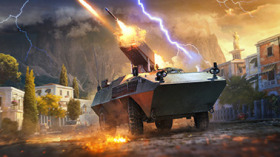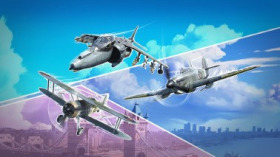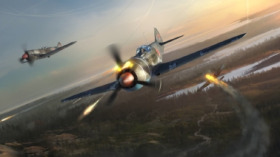
- For PC
- For MAC
- For Linux
- OS: Windows 10 (64 bit)
- Processor: Dual-Core 2.2 GHz
- Memory: 4GB
- Video Card: DirectX 11 level video card: AMD Radeon 77XX / NVIDIA GeForce GTX 660. The minimum supported resolution for the game is 720p.
- Network: Broadband Internet connection
- Hard Drive: 17 GB
- OS: Windows 10/11 (64 bit)
- Processor: Intel Core i5 or Ryzen 5 3600 and better
- Memory: 16 GB and more
- Video Card: DirectX 11 level video card or higher and drivers: Nvidia GeForce 1060 and higher, Radeon RX 570 and higher
- Network: Broadband Internet connection
- Hard Drive: 95 GB
- OS: Mac OS Big Sur 11.0 or newer
- Processor: Core i5, minimum 2.2GHz (Intel Xeon is not supported)
- Memory: 6 GB
- Video Card: Intel Iris Pro 5200 (Mac), or analog from AMD/Nvidia for Mac. Minimum supported resolution for the game is 720p with Metal support.
- Network: Broadband Internet connection
- Hard Drive: 17 GB
- OS: Mac OS Big Sur 11.0 or newer
- Processor: Core i7 (Intel Xeon is not supported)
- Memory: 8 GB
- Video Card: Radeon Vega II or higher with Metal support.
- Network: Broadband Internet connection
- Hard Drive: 95 GB
- OS: Most modern 64bit Linux distributions
- Processor: Dual-Core 2.4 GHz
- Memory: 4 GB
- Video Card: NVIDIA 660 with latest proprietary drivers (not older than 6 months) / similar AMD with latest proprietary drivers (not older than 6 months; the minimum supported resolution for the game is 720p) with Vulkan support.
- Network: Broadband Internet connection
- Hard Drive: 17 GB
- OS: Ubuntu 20.04 64bit
- Processor: Intel Core i7
- Memory: 16 GB
- Video Card: NVIDIA 1060 with latest proprietary drivers (not older than 6 months) / similar AMD (Radeon RX 570) with latest proprietary drivers (not older than 6 months) with Vulkan support.
- Network: Broadband Internet connection
- Hard Drive: 95 GB
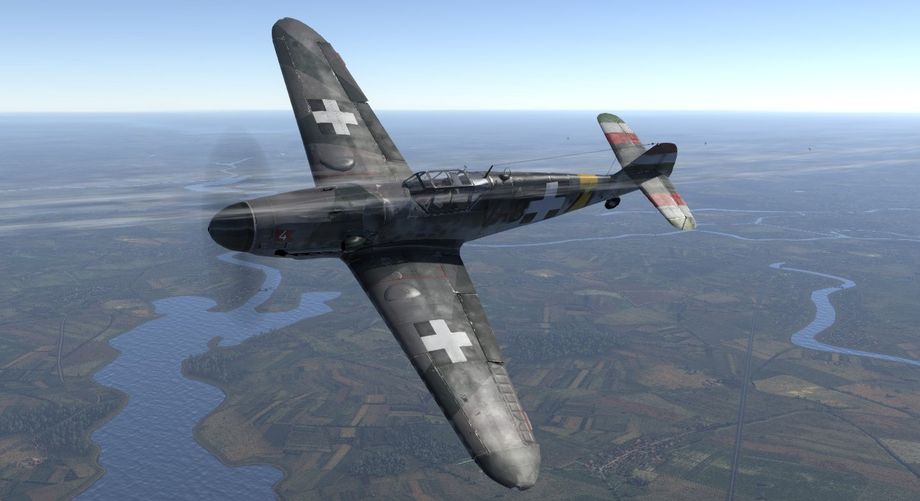
Bf.109 G-6 Hungarian Air Force made by _TerremotO_ | Download here
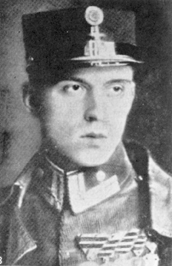 |
József Kiss |
The beginnings of the Hungarian Air Force can be traced to the Austro-Hungarian Air Force. Hungarian aviators took part in the First World War, and pilots such as Ferenc Gräser, István Fejes and József Kiss became aces. After the dissolution of the Austro-Hungarian Empire in 1918 Hungary was for a short time a communist republic – however, the Hungarian Soviet Republic, which operated a small Hungarian Red Air Force, collapsed on August 1st 1919.
The Treaty of Trianon, signed on the 4th of June 1920, effectively banned Hungary from having it's own air force. However, similarly to Germany and Austria, the Kingdom of Hungary began rebuilding their own air force, disguising it as private air clubs. This fact was revealed to the world in 1938 when the Bled agreement revoked the arms restrictions placed on Hungary after Trianon. At the time, the Royal Hungarian Air Force's main fighter was the Italian made Fiat CR.32, with the German Junkers Ju-86 serving as the main bomber. A small Hungarian force was then dispatched to Czechoslovakia, with the aim of supporting ground units in the capture of the Upper Hungary province.
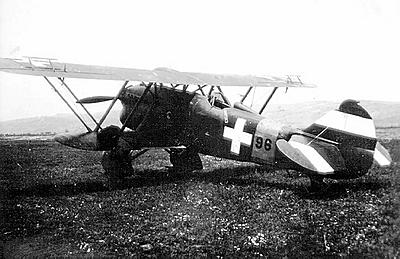 |
The Hungarian Air Force’s Fiat CR.32 |
At first, Hungary did not actively participate in the Second World War. This did not stop it from upgrading its air force, replacing some of the CR.32 fighters with newer CR.42 models. On 20th November 1940, Prime Minister of Hungary Pál Teleki signed the Tripartite Act, which brought Hungary in line with other Axis powers. The Hungarians took part in the Invasion of Yugoslavia by sending the Third Army to occupy Vojvodina. The Hungarian Air Force would find itself in the thick of the action again after Germany invaded the Soviet Union on the 22nd June 1941.
The Royal Hungarian Air Force quickly found itself fighting on the Eastern Front with the Red Army Air Force. At the time some units were starting to retire their old CR.32 and CR.42 biplanes, with the replacement of another Italian fighter – the Reggiane Re.2000.
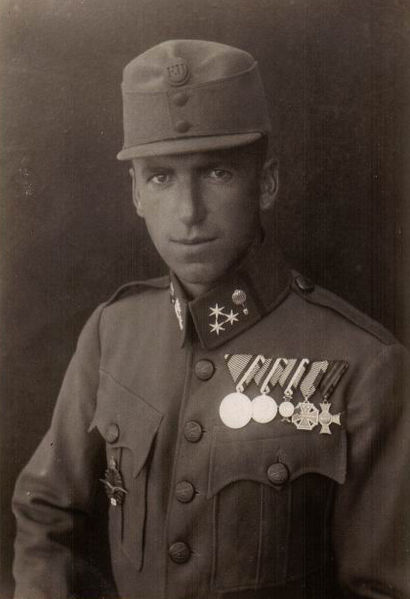 |
Fejes István |
The heavy fighting on the Eastern Front took its toll on the Hungarians, with a lot of their original aircraft being shot down in fierce fights over Ukraine. However, Germany quickly set about rearming its ally – in October 1942, most units were reinforced with new German aircraft – Bf 109F-4 fighters, Ju87 dive bombers and Me210 heavy fighters.
The Bf109's were later upgraded to the G-2, and finally the G-6 version as the war progressed. Soon, the Hungarians had not only to fight in the USSR, but also defend their country from US bombing raids aimed at Hungarian industry. The top scoring ace of the Hungarian Air Force, Dezső Szentgyörgyi, ended the war with 29 confirmed victories, 6 of which against US aircraft.
The Royal Hungarian Air Force was disbanded after the fighting in Hungary ended, as the country was now in the Soviet sphere of influence. The new air force was supplied by the Soviet Union, with aircraft such as the MiG-15, Il-28 and MiG-21 forming the spearhead of their force for decades to come. Today, the Hungarian Air Force operates Swedish JAS-39 Gripen fighters in addition to post-Soviet MiG-29 aircraft.
Adam “BONKERS” Lisiewicz
To honor the Hungarian Air Force and Hungarian pilots, we present the Hungarian Air Force roundel, which will be added to War Thunder:

